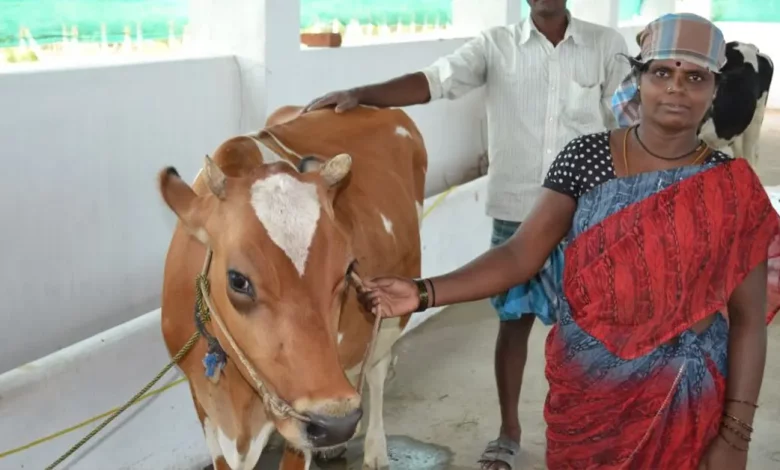Daily Current Affairs for UPSC
Animal Husbandry Infrastructure Development Fund (AHIDF)
Syllabus: Economy[GS Paper-3]

Context: The Union Cabinet has approved the extension of the Animal Husbandry Infrastructure Development Fund (AHIDF) for three more years until 2025-26. The fund will be implemented under the Infrastructure Development Fund (IDF) and will have a budget of Rs. 29,610.25 crore.
Animal Husbandry Infrastructure Development Fund (AHIDF):
- According to the Atma Nirbhar Bharat Abhiyan stimulus package, it has also introduced a Central Sector Scheme known as Animal Husbandry Infrastructure Development Fund (AHIDF).
- The goal in this plan is to introduce the rise and development of the infrastructure of the cattle husbandry sphere and to produce the riches in this type of industry.
- A variety of entities such as FPO, private companies, individual entrepreneurs, section 8 companies, and MSME would be available with the opportunity to take advantage of this scheme.
- For the operation of this scheme smoothly, the Government of India (GoI) will supply MSME and Dairy Cooperatives with the credit guarantee.
- These assurances amount to up to 0.25 of the credit loan that is drawn from the Credit Guarantee Fund with an overall sum of Rs. 750 crore.
- Furthermore, to support the initiative of investing in the animal breeding sector, the GoI will offer an interest subsidy of 3% for a period of 8 years.
- This subvention will be accompanied by two years of holiday from repayment of loans and will outfitted for the credit up to 90 percent earned from scheduled banks and financial institutions like the National Cooperative Development Corporation(NCDC), National Bank for Agriculture and Rural Development(NABARD) and National Dairy Development Board(NDDB).
Advantages of AHIDF:
- The implementation of this scheme will have a significant impact on employment generation, both directly and indirectly, benefiting approximately 3.5 million individuals through the promotion of entrepreneurship.
- Additionally, the investment made through incentivization in AHIDF will have a multiplier effect, attracting private investment and increasing it by a factor of seven.
- This, in turn, will encourage farmers to allocate more resources towards inputs, ultimately resulting in higher productivity levels and subsequently leading to an increase in their overall income.
Success of AHIDF:
- The dairy, meat, and animal feed sector has experienced a 2-4% increase in processing capacity.
- The AHIDF has contributed to this by adding 141.04 LLPD of milk processing capacity, 79.24 lakh metric ton of feed processing capacity, and 9.06 Lakh metric ton of meat processing capacity to the supply chain since the scheme began.
Way Forward:
- The infrastructure in the livestock
- sector can also be improved through introduction of new activities such as advanced breed multiplication units, where new advanced breed is cultured, and manufacturing units of veterinary drugs and vaccines.
- That being the case, this creates a good window of opportunities for investors to realise profitability in the livestock industry by pumping into value addition, cold chain and integrated units as well as technologically advanced livestock and poultry farms.
Conclusion:
- AHIDF is becoming a means to double farmers’ income by attracting private sector investment in the livestock sector and implementing advanced technologies for processing and value addition.
- Additionally, it aims to boost the economy by encouraging the export of livestock products. Investing in processing and value addition infrastructure will also facilitate the export of these processed and enhanced goods.
Source: Bu





.png)



